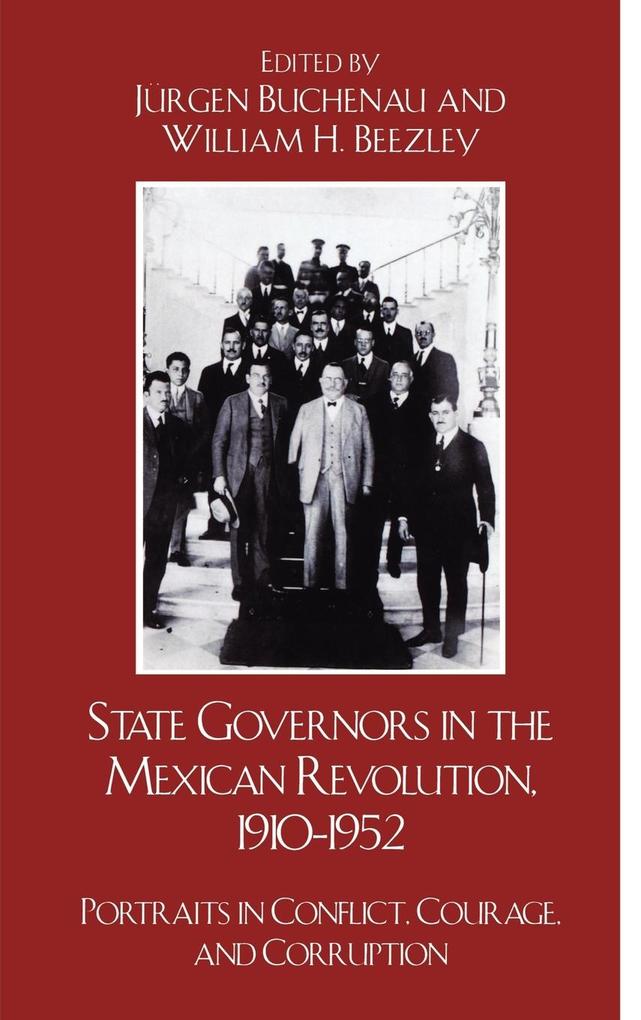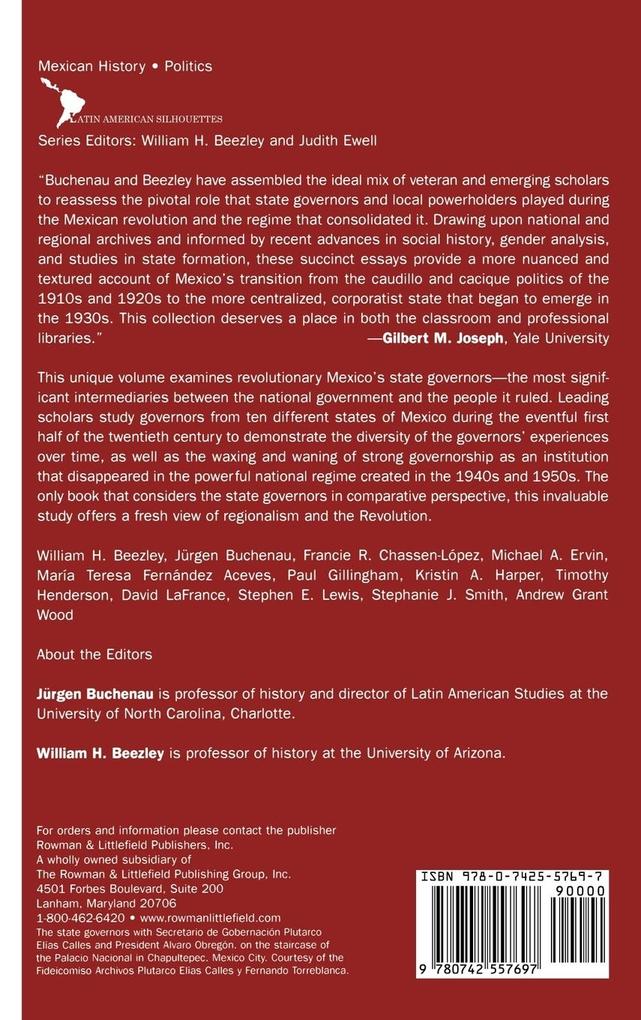This unique book traces Mexico's eventful years from 1910 to 1952 through the experiences of its state governors. During this seminal period, revolutionaries destroyed the old regime, created a new national government, built an official political party, and then discarded in practice the essence of their revolution. In this tumultuous time, governors—some of whom later became president—served as the most significant intermediaries between the national government and the people it ruled.
Leading scholars study governors from ten different states to demonstrate the diversity of the governors' experiences implementing individual revolutionary programs over time, as well as the waxing and waning of strong governorship as an institution that ultimately disappeared in the powerful national regime created in the 1940s and 1950s. Until that time, the contributors convincingly argue, the governors provided the revolution with invaluable versatility by dealing with pressing issues of land, labor, housing, and health at the local and regional levels. The flexibility of state governors also offered test cases for the implementation of national revolutionary laws and campaigns. The only book that considers the state governors in comparative perspective, this invaluable study offers a fresh view of regionalism and the Revolution.
Contributions by: William H. Beezley, Jürgen Buchenau, Francie R. Chassen-López, Michael A. Ervin, María Teresa Fernández Aceves, Paul Gillingham, Kristin A. Harper, Timothy Henderson, David LaFrance, Stephen E. Lewis, Stephanie J. Smith, and Andrew Grant Wood.
Inhaltsverzeichnis
Chapter 1: The Role of State Governors in the Mexican Revolution
Chapter 2: Benito Juárez Maza of Oaxaca: A Revolutionary Governor?
Chapter 3: Salvador Alvarado of Yucatán: Revolutionary Reforms, Revolutionary Women
Chapter 4: Plutarco Elías Calles of Sonora: A Mexican Jacobin
Chapter 5: Adalberto Tejeda of Veracruz: Radicalism and Reaction
Chapter 6: José Guadalupe Zuno Hernández and the Revolutionary Process in Jalisco
Chapter 7: Tomás Garrido Canabal of Tabasco: Road Building and Revolutionary Reform
Chapter 8: Marte R. Gómez of Tamaulipas: Governing Agrarian Revolution
Chapter 9: Efraín Gutiérrez of Chiapas: The Revolutionary Bureaucrat
Chapter 10: Maximino Avila Camacho of Puebla
Chapter 11: Baltasar Leyva Mancilla of Guerrero: Learning Hegemony











